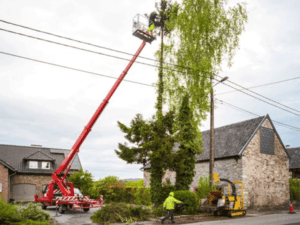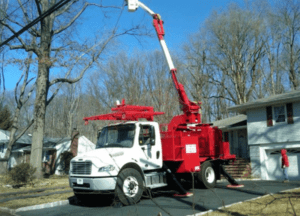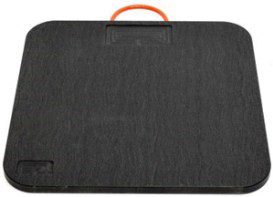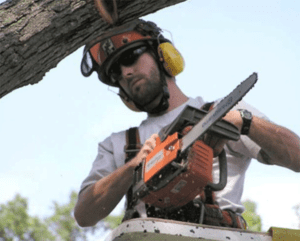 Tree care companies use aerial lift machines to get into safe, stable positions to make chain saw cuts aloft. The newer units have many updated options to choose from, but one thing hasn’t changed – the importance of operating these machines properly and safely.
Tree care companies use aerial lift machines to get into safe, stable positions to make chain saw cuts aloft. The newer units have many updated options to choose from, but one thing hasn’t changed – the importance of operating these machines properly and safely.
Allow us to give you some helpful safety tips for operating your aerial lift. You may have heard some of these before, but a refresher course never hurts.
Here’s the Safety 101 part …
A simple safety and function check should take place prior to aerial lift operation, to include an inspection for loose pieces/parts, cracked or leaking hoses, and wear on metal/fiberglass components. The device should also be tested with no one in the bucket or on the platform to ensure that it is functioning correctly.

Cleanliness does have an impact on the performance and safety of aerial lifts, particularly regarding electrical conductivity. Regular cleaning with the appropriate products is recommended.
Roadside operations require another layer of work site precautions. Federal/state DOT regulations should be followed regarding signage, flaggers, high-visibility apparel, cones, etc. The noisiness of aerial lift work sites means pedestrian approaches often go unnoticed, so flagging the site perimeters and even spotters may be required. In addition, noise levels may require that an effective communication system between the ground crew and the operator be in place. Options such as whistles, radios, or hand/arm signals are all acceptable.

As you know, the lift will only be as stable as the ground you set it up on. With that in mind, your bottom line can be affected if you are forced to move your lift during a job – time is money. As much as is possible, your lift should be positioned to carry out the maximum amount of work with a minimal amount of repositioning.
All required outriggers should be extended as fully as needed and placed on secure positions. Pads, cribbing, or other methods will often be needed to ensure stable outrigger placement. A lift’s boom extension will create a great deal of pressure on the outriggers, so skimping on pads or cribbing is nothing more than a recipe for disaster. In addition, tires should be properly chocked with something more substantial than a chunk of wood or a hard hat.

The insulated or dielectric capabilities of lifts need to be inspected regularly as part of a maintenance plan, typically by the manufacturer or their representative, to ensure that they are still functioning correctly. The dielectric capabilities of some lifts can lead to operators being a bit casual around energized conductors or utility wires. Minimum approach distances must be followed by all arborists. Those working within them must be line-clearance tree trimmers … they have received specialized training so they can work within 10 feet of energized power lines and equipment.
When working aloft, bouncing large, woody debris off your aerial lift is a bad idea. Rigging systems should be used to avoid or minimize impacts on the lift and its structure. Even minor impacts will, over time, take a toll on the structure of the lift and could lead to catastrophic failures.
 Avoiding damage to your lift is one thing – what about damage and injury to you? Emergency preparedness plans are vital in aerial lift operations. All crew members should be familiar with the lower controls of the aerial lift and be trained in the proper actions to take in the event of an injured or incapacitated operator. In addition, systems that allow the operator to evacuate or regain the bucket should be present and the operator trained in their use.
Avoiding damage to your lift is one thing – what about damage and injury to you? Emergency preparedness plans are vital in aerial lift operations. All crew members should be familiar with the lower controls of the aerial lift and be trained in the proper actions to take in the event of an injured or incapacitated operator. In addition, systems that allow the operator to evacuate or regain the bucket should be present and the operator trained in their use.
There are many different systems available for situations when an aerial lift operator needs to carry out a self-rescue. Some even allow the operator to get back in the bucket after being ejected. Most self-rescue systems are “all parts included,” meaning they typically include some form of descent device and a rope that meets the strength requirements.
Contact Utility Equipment Parts (UEP) today for all your bucket truck needs, includng DICA Outrigger Pads.
The UEP Guys  We Know Parts!!
We Know Parts!!
This post was excerpted from an article published on 12/27/17 on Tree Services Magazine website. Thanks to Kevin Koberg and Kevin Kabler at DICA for allowing us to post this on our website.